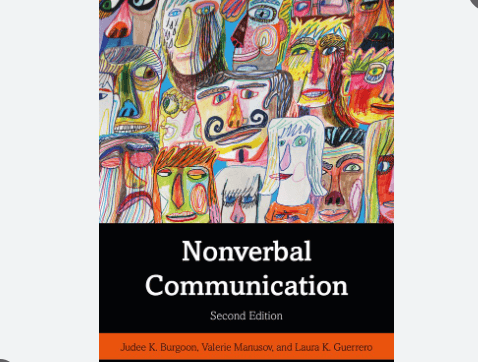Organizational Commitment: Why Employees Stay (and Thrive)

- File photo | Credit Business Leadership TodayOpens in new window
- Have you ever noticed a colleague who consistently goes above and beyond? Maybe they're always the first to volunteer for a new project or stay late to help a teammate meet a deadline. This kind of dedication goes beyond just doing their job – it reflects a deep organizational commitment.
Committed to the Cause: Defining Organizational Commitment
Organizational commitment is the psychological attachment an employee feels towards their organization. It's a sense of identification with the company's goals, a belief in its values, and a desire to contribute to its success. It also reflects the degree to which an employee feels connected to their organization and is willing to exert effort on its behalf.
Characteristically, organizational commitment:
- is a unique type of bond which emphasizes a stance of dedication and responsibility to the organization.
- is regarded as an attitude as it refers to the relatively stable mindsets of individuals towards their organization.
- is a multifaceted construct that can be influenced by a variety of factors, including job satisfaction, organizational culture, leadership, and employee perception of the organization's values and goals.
What is Commitment?
Within the literatures in social psychology,Opens in new window commitment is often defined as a force that binds a person to a course of action that is relevant to a particular target.
Organizational Commitment, therefore is built when individuals develop three sets of closely related attitudes toward their organizations:
- a belief in and acceptance of the organization’s goals and values,
- a strong desire to maintain membership in the organization, and
- a willingness to exert considerable effort on behalf of the organization.
The more favorable people’s attitudes toward the organization are, the greater people’s acceptance of the goals of the organization, as well as their willingness to exert more effort on behalf of the organization (Gbadamosi, 2003).
Traditionally, organizational commitment has been defined through either a behavioral or an attitudinal approach.
The behavioral approach views commitment as the state of being bound to the organization by personal investment. In contrast, the attitudinal approach refers to commitment as both a state in which an employee identifies with a particular organization and its goals and as the degree to which the employee wishes to maintain membership in the organization in order to assist in achieving these goals.
Research results have proven that commitment is a powerful source of motivation, and it can lead to persistence in a course of action, even in the face of opposing forces (Meyer, Becker, & Vandenberghe, 2004).
In contrast to the concept of motivation,Opens in new window which can have short-term implications for behavior, the binding nature of commitment has relatively long-term implications for an employee. Hence, commitment to the organization is a key variable in the high-performance cycle, because it can affect a person’s willingness to remain in the organization and to continue to set and commit to high organizationally relevant goals (Meyer & Herscovitch, 2001).
Strong culture organizations do much to develop this commitment and sense of ownership in their members. On the other hand, “in typical corporations, members comply with directions but may have little involvement with the firm beyond self-interest; that is, there is no commitment to the firm beyond that of a fair exchange of effort for money and, perhaps, status” (O’Reilly 1989: 18).
Components of Organizational Commitment
There are several components of organizational commitment, and researchers often categorize them into three main types:
Affective commitment
Affective commitment reflects a preference aroused out of a sense of emotional attachment to stay with the organization. Affective commitment develops when involvement in an occupation proved to be a satisfying experience. For example, it provided the opportunity to do satisfying work or the opportunity to develop valued skills.
Employees with high affective commitment are likely to stay with the organization because they want to, not because they feel they have to. Factors contributing to affective commitment include positive work experiences, a sense of belonging, and a belief in the organization's values and goals.
Continuance commitment
In continuance commitment, preference to remain with the present organization is rooted in a sense of economic necessity. For example, the employee recognizes high costs associated with leaving the occupation.
Normative commitment
In normative commitment, preference to stay with the present organization arises out of a sense of moral obligation to remain. The normative commitment develops as the result of the internalization of normative pressures to pursue a course of action, and the receipt of benefits that created a sense of obligation to reciprocate. For example, a family history of involvement in a particular occupation, or receiving financial support to pursue a career could both contribute to the development of normative commitment (Meyer et al, 1993). Factors influencing normative commitment include a sense of loyalty, gratitude for opportunities provided by the organization, or a belief in repaying the organization for investments made in the employee.
Continuance commitment develops when the individual made investments (such as the time and effort in acquiring occupation-specific skills) that would be lost or reduced in value if he/she were to change occupations. Factors such as the perceived difficulty of finding another job or the investment of time and effort in the organization contribute to continuance commitment.
A person who is affectively committed (that is has as strong desire to remain in the occupation) is more likely than someone who is not so attached to keep up with developments in the occupation and to remain within the organization. The same is true of people who have a strong normative commitment (that is, a sense of obligation to remain).
In contrast, people who have a strong continuance commitment (that is, those who recognize the high costs associated with leaving the occupation) are generally less inclined than those who remain for other reasons to involve themselves in occupational activities besides those required to continue membership (Meyer, Allen & Smith, 1993).
The presence of organizational commitment is a stabilizing force indicating that the individual’s purposes are to a great extent aligned with those of the organization. Where objectives of the organization are in conformity with those of employee, it follows that the employees will act as organizational citizens in devoting efforts to organizational purposes much beyond what they can expect to be rewarded for.
Organizational behavior models predict that committed employees will be willing to make personal sacrifices and even perform organizational citizenship behaviorsOpens in new window for the organization and do not depend primarily on external rewards or punishments.
Importance of Organizational Commitment
Organizational commitment is important for a number of reasons. It is positively correlated with:
- Job satisfaction: Employees who are committed to their organizations are more likely to be satisfied with their jobs.
- Employee engagement: Committed employees are more likely to be engaged in their work and to go the extra mile for their organizations.
- Productivity: Committed employees are more likely to be productive and to contribute to the success of their organizations.
- Turnover: Committed employees are less likely to leave their organizations.
Fostering Organizational Commitment
Organizations can foster organizational commitment by doing a number of things, including:
- Creating a positive and supportive work environment.
- Providing employees with opportunities for growth and development.
- Recognizing and rewarding employees for their contributions.
- Involving employees in decision-making processes.
- Communicating openly and honestly with employees.
Conclusion
Several factors can influence organizational commitment, including leadership styles, organizational culture, job satisfaction, perceived organizational support, and the alignment of individual and organizational values. Individuals seek out organizations that fulfill their specific needs and desires and that allow for maximum utilization of their skills and abilities.
Understanding and fostering organizational commitment is a key aspect of human resource management and organizational development. Strategies for enhancing commitment may include effective communication, leadership development, creating a positive work environment, and providing opportunities for employee growth and development.
























